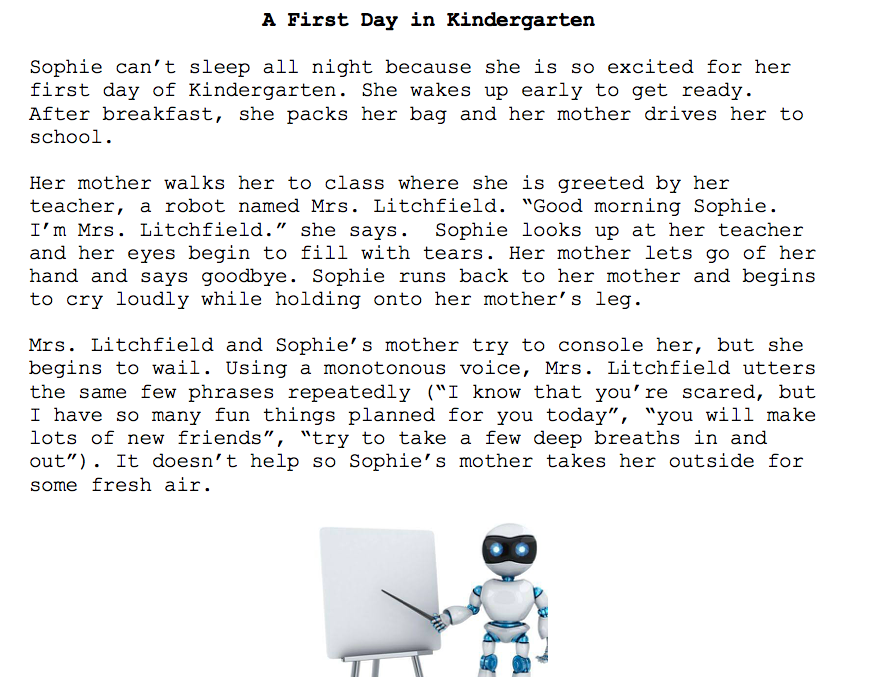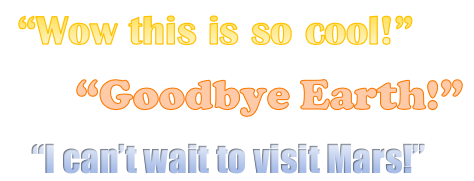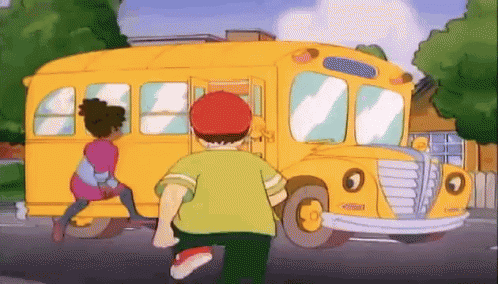In this task, we created two speculative narratives about our potential relationship with media, education, text and technology in the next 30 years.
Narrative 1

The idea for this narrative stemmed from an article that I recently read called “Humanoid Robots as Teachers and a Proposed Code of Practice”. Since the start of our COVID-19 pandemic, this narrative appears to be closer to reach. Virtual learning has made its way into primary level education. In the article titled “Reboot for the AI Revolution”, it is suggested that the ongoing artificial-intelligence revolution will change almost every line of work, creating big social and economic opportunities, while also creating challenges (Hariri, 2017). This narrative aligns with the idea that intelligent computers will push humans out of the job market and create a new ‘useless class’. In this narrative, I attempted to touch on the uncertainty regarding the capability of a computer to decipher human emotions and desires. Could a robot potentially console a child more effectively than a human? Can digital thought adequately mimic human thought?
A thought from “Speculative Everything: Design, Fiction, and Social Dreaming” that stood out to me is that if we were to fully embrace an alternative technology, society and its infrastructure would have to substantially change. During this pandemic, there have been a number of challenges that we weren’t prepared for. There were many glitches with the technology, especially at the start. To be honest, I didn’t think that teaching Kindergarten-aged children virtually would be possible, yet here I am seeing it happen at this very moment.
Narrative 2

These are a few of the initial student reactions that I’d expect in my classroom. As a child, I always wished I had a teacher as cool as Ms. Frizzle with a magic school bus that could transform into a submarine, a spaceship, an animal, or even a tiny particle. I’d imagine how exciting it would be to visit all of the different places featured in each episode.

A virtual field trip featuring a VR headset is something that I would be thrilled to see take place within the classroom. According to Villani & Wilbur (2007), recent studies show that VR can provide a more effective learning tool than traditional classroom practices. The experience of working with virtual worlds is highly motivating. In addition to providing an immersive learning experience, VR technology can spark creativity and imagination. It has the potential to make normally inaccessible learning experiences possible. While the technology may currently be available, it isn’t widely accessible for use within the classroom (due to cost and other factors). Although the realm of VR is an exciting one, I question the effect of a headset on student eyesight and other elements of physical health and well-being.
Adamo-Villani, N. & Wilbur, R. (2007). An immersive game for k-5 math and science. Proceedings of the 11th International Conference Information Visualization, 921-924.
Dunne, A. & Raby, F. (2013). Speculative Everything: Design, Fiction, and Social Dreaming. Cambridge: The MIT Press. Retrieved August 30, 2019, from Project MUSE database.
Hariri, Y. N. (2017). Reboot for the AI revolution. Nature International Weekly Journal of Science, 550(7676), 324-327.
Newton, D. P., & Newton, L. D. (2019). Humanoid robots as teachers and a proposed code of practice. Frontiers in Education, 4, 125. Frontiers.